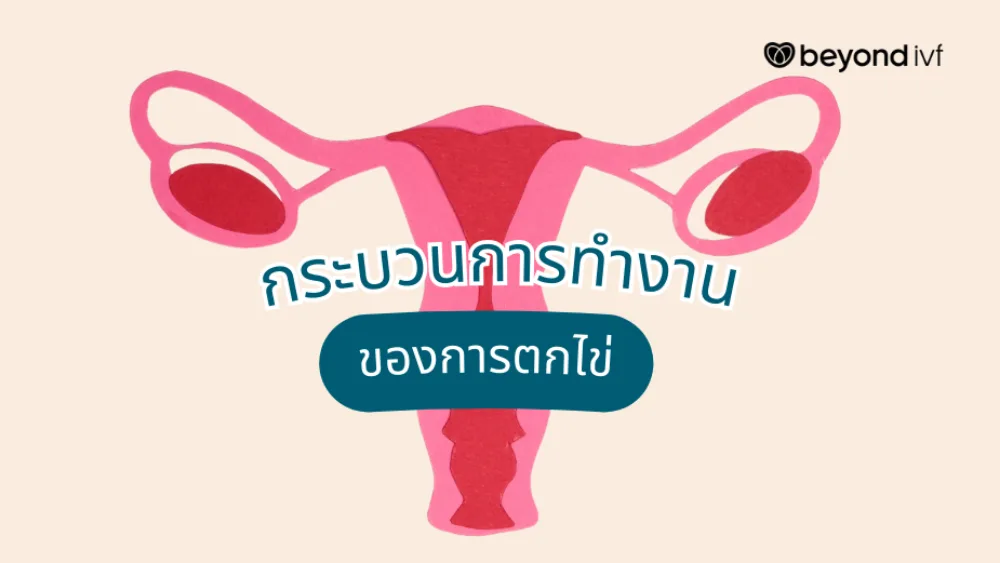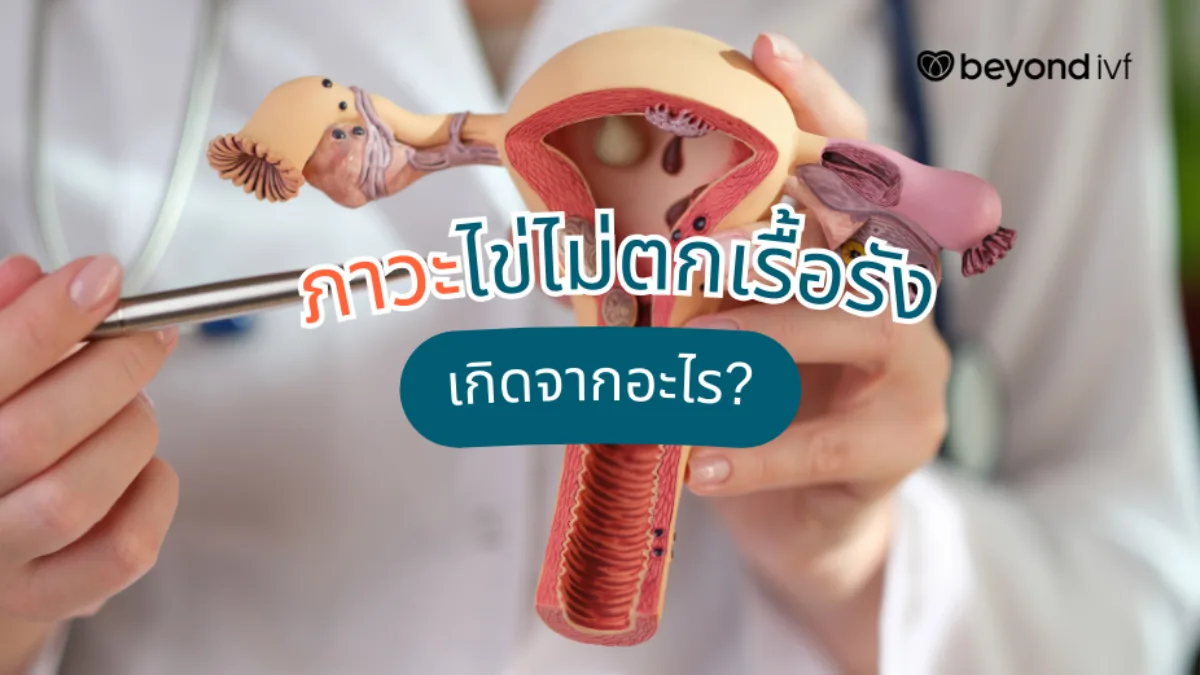Normally, many women may experience irregular or missing periods for extended periods of time. This could be a sign that you are experiencing chronic anovulation — a condition in which ovulation does not occur regularly or at all. You may not yet know what causes chronic anovulation, whether it poses serious health risks, or how it can be treated. This article will help answer those questions.
Answering the question: What causes anovulation?
Chronic anovulation is a common condition found in women of reproductive age. It refers to the failure of the ovaries to release an egg (ovulate). One of the most noticeable symptoms is missed periods.
Statistics show that about 10% of women of reproductive age experience chronic anovulation.
Other common symptoms include:
-
Oily facial skin
-
Acne
-
Excess body hair (such as on the arms or legs)
-
Irregular periods, or in some cases, complete absence of menstruation for long periods
Importantly, chronic anovulation can affect overall health, particularly causing infertility issues, especially for those hoping to conceive in the future.
In addition to fertility problems, chronic anovulation can also lead to other long-term health concerns, such as:
-
Diabetes
-
Ovarian cancer
-
Endometrial cancer (cancer of the uterine lining)
รู้จัก ‘ภาวะไข่ไม่ตกเรื้อรัง’
Anovulation or Ovulation Disorder is a condition in which no egg is released from the ovary. This may occur with or without the development of follicles in the ovaries.
When ovulation does not occur, the corpus luteum (which normally forms after ovulation) is not produced. The corpus luteum is responsible for secreting progesterone, the hormone that causes the uterine lining (endometrium) to shed, resulting in menstruation. Without ovulation, progesterone is not produced, and this can lead to missed periods. In cases of chronic anovulation, the thickened uterine lining may shed abnormally, leading to heavy menstrual bleeding or spotting.
You can read more in the article:
"Irregular or Missed Periods: What Causes Them and What Do They Indicate?"

How does ovulation work?
Normally, pregnancy can only occur when a woman’s egg is fertilized during ovulation. Ovulation happens just once per month, and the egg is available for fertilization for only about 12 to 24 hours.
If fertilization occurs—meaning there is intercourse during this fertile window—the egg will implant into the uterine lining and develop into an embryo, resulting in pregnancy. However, if the egg is not fertilized, it will disintegrate, and about 14 days later, menstruation will occur.
So, how can we know when ovulation takes place?
Typically, a woman’s body ovulates in a cycle—around day 14 after the first day of her period, and approximately 14 days before the next period starts. However, the exact timing can vary depending on an individual’s health and lifestyle at that time.
Read more in the article: “What is Ovulation Tracking and How to Do It?”

What causes chronic anovulation?
Hormonal Regulation System in Women of Reproductive Age
The hormonal regulation system responsible for hormone production in women of reproductive age may still be underdeveloped, particularly during the transition from childhood to adolescence, and again when the ovaries are nearing the end of their function — such as during the perimenopausal phase. At these times, hormonal activity becomes irregular compared to that of the reproductive years.
1.Side Effects of Polycystic Ovary Syndrome (PCOS)
Polycystic Ovary Syndrome (PCOS) is a condition characterized by multiple system abnormalities that lead to irregular or absent ovulation and the formation of small cysts in the ovaries. The exact cause is still unknown. It is a common condition among women of reproductive age.
2.Premature Ovarian Insufficiency (POI)
Premature Ovarian Insufficiency (POI) refers to the ovaries ceasing to function normally before the age of 40. When the ovaries deteriorate, they can no longer produce estrogen or release eggs regularly, resulting in infertility.
3.Diminished Ovarian Reserve (DOR)
When the number of eggs in the ovaries decreases, it can impair natural conception. Besides aging, other factors that may lead to a reduced ovarian reserve include:
-
Smoking
-
History of radiation therapy, chemotherapy, or ovarian surgery
-
Conditions affecting the fallopian tubes
-
Pelvic infections
-
Genetic disorders
-
Autoimmune disorders
Hypothalamic and Pituitary Gland Dysfunction
The hypothalamus and pituitary gland are responsible for regulating hormones by stimulating or inhibiting the anterior pituitary and producing hormones from the posterior pituitary. Prolactinomas (tumors that produce excess prolactin) can lead to high prolactin levels, causing missed periods, infertility, and symptoms of estrogen deficiency.
Hormonal Imbalances
-
Gonadotropin-releasing hormone (GnRH) is produced by the hypothalamus and stimulates the release of FSH.
-
Follicle-stimulating hormone (FSH) stimulates the growth of ovarian follicles. Abnormally low levels (often seen in PCOS) or high levels (possibly indicating premature menopause) can lead to infertility.
-
Luteinizing hormone (LH) is produced by the pituitary gland and belongs to a group of hormones called gonadotropins. LH stimulates the ovaries in women. Elevated LH levels may indicate ovarian dysfunction or premature ovarian failure.

Check for Sure "Warning Signs of Chronic Anovulation"
Missing periods for several months or having a period only once every 2-3 months. Some women may only have a period once or twice a year.
Irregular periods that last longer than usual or have unusually heavy flow when they do occur. Acne and oily skin. Infertility.
Diagnosis of Chronic Anovulation
For the diagnosis of chronic anovulation, doctors will generally take a medical history related to the menstrual cycle. If menstruation is irregular or has been absent for an extended period, the doctor will perform a female hormone test through a blood draw (Progesterone Blood Test). This test measures the level of progesterone at a certain point in the menstrual cycle, as progesterone levels increase after ovulation. Therefore, if progesterone levels do not rise, it may indicate that ovulation has not occurred.
In addition, doctors may perform an ultrasound to examine the size and shape of the uterus and ovaries. The ultrasound can also check if the ovaries have cystic structures (PCOS: Polycystic Ovarian Syndrome). The ultrasound can be used to monitor follicle growth and ovulation. However, ultrasound testing is not commonly used, as it requires multiple scans, spaced 1-2 weeks apart.
Treatment Guidelines for Chronic Anovulation
Treatment Guidelines for Chronic Anovulation:
-
Behavioral Modification
There are two types of ovulation-stimulating drugs: oral medications and injectable medications. Oral medications are typically prescribed to be taken from day 3-5 of the menstrual cycle, with 1-3 tablets daily for a period of 5 days. Injectable medications are usually used in combination with oral medications or may be used alone. However, the dosage and timing of the injections can vary significantly based on the doctor’s adjustments to suit each patient.
These medications must be used under the supervision of a doctor, so it is not recommended to self-medicate, as complications from misuse may arise.
-
Ovulation Stimulation Medications
Hormone supplements may be prescribed if the cause of anovulation is related to factors like being underweight or overweight, which are not due to any underlying disease or disorder. Initially, to regulate the menstrual cycle, the doctor may prescribe hormone pills, which are similar to those used to delay menstruation.
When taking these pills, menstruation should become more regular. The patient may be instructed to take the medication regularly at the same time each month for about 6 months, to normalize the menstrual cycle and ensure the endometrial lining sheds properly. Afterward, the doctor will assess if menstruation occurs naturally without the need for medication.
-
Ovarian Cyst Surgery
Surgery to treat polycystic ovaries involves removing the parts of the ovaries that produce excess testosterone. This can help restore normal ovulation through ovarian drilling. However, this treatment has short-term effects and does not guarantee long-term results.

Frequently Asked Questions
Can you get pregnant if you don’t ovulate?
When ovulation does not occur, pregnancy is not possible because there is no egg available for fertilization. If a woman experiences irregular ovulation, the chances of pregnancy are lower due to fewer ovulations compared to normal.
Can you be pregnant without ovulating?
In cases where it’s found that ovulation doesn’t occur, or if a urine test indicates no ovulation, pregnancy might still occur due to inaccuracies in the test, which is not 100% reliable. If you suspect you are not ovulating, it is recommended to consult a doctor for a more precise examination, including hormone level testing for ovulation, which will be more accurate.
Conclusion
Anovulation is a common cause of infertility. Women with abnormalities in egg development and ovulation often experience irregular menstrual cycles. The causes of chronic anovulation include side effects from polycystic ovary syndrome (PCOS), premature ovarian insufficiency, reduced egg production, and hormonal imbalances.
Anovulation can be treated by changing eating habits, using ovulation-stimulating medications, or undergoing surgery to remove ovarian cysts in cases of PCOS. If you experience irregular or missed periods for an extended period, it's important to consult a doctor for diagnosis and timely treatment. If you have any questions, feel free to ask for more details via Line: @beyondivf






